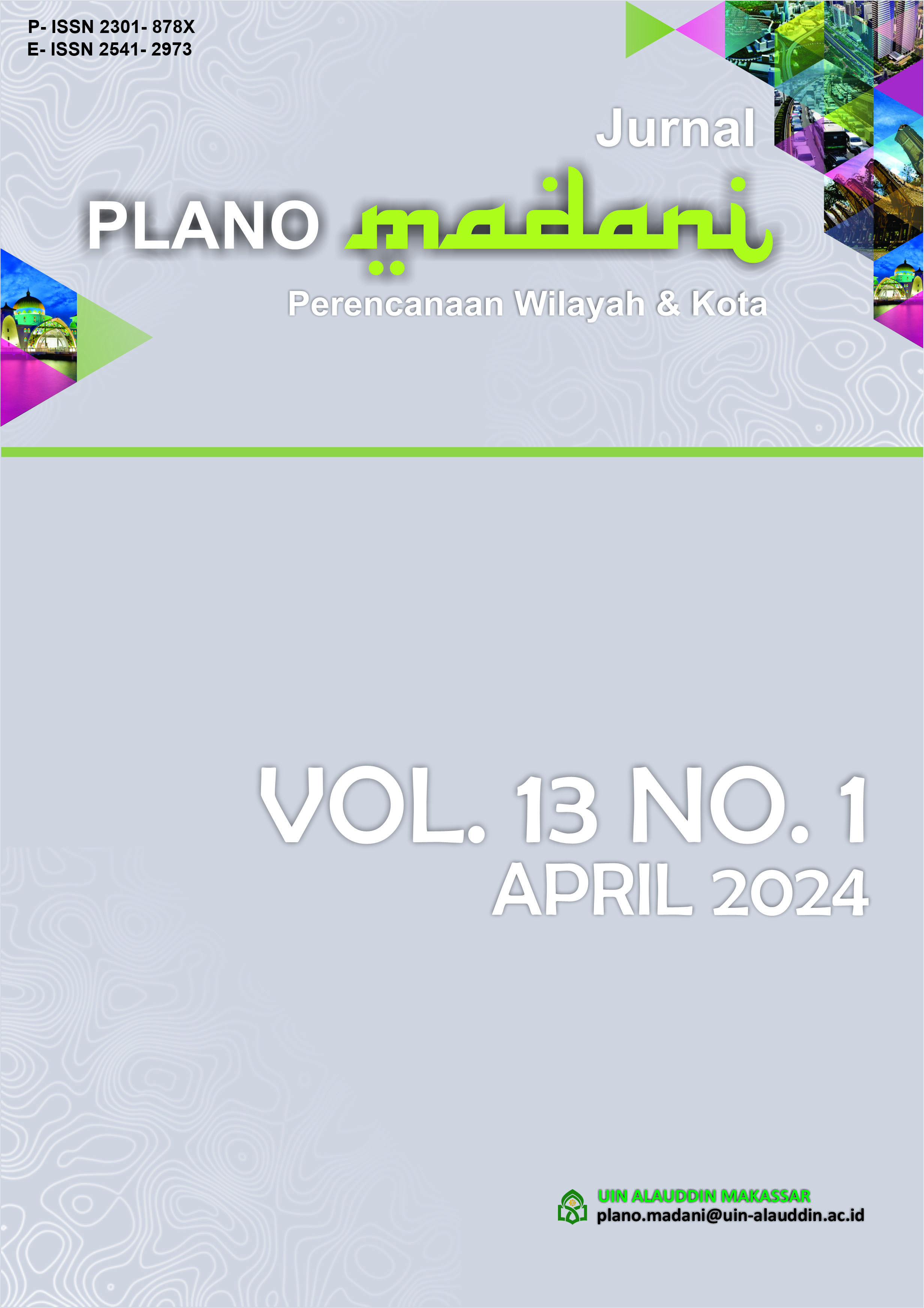UTILIZATION OF PUBLIC OPEN SPACE AS A STREET VENDOR ACTIVITY CASE STUDY IN THE ALOON ALOON KAUMAN AREA, SEMARANG CITY
Abstract
The presence of street vendors (street vendors) in urban spaces is generally a problem, as they are known as the irregularity of the city and occupy public spaces which is not recommended. PKL is growing rapidly in various areas of the city, including the Aloon Aloon Kauman area which is also a residential, trade, cultural heritage, and cultural tourism area. The existence of Johar Market in the area is very important because it encourages street vendors to trade there. However, the growth of street vendors causes them to occupy every shoulder of the road in the area without paying attention to the location that should be intended for them such as sidewalks, road bodies, and shop fronts to become street vendors without paying attention to the surrounding activities, causing conflicts in space use and reducing the optimality of public spaces. This problem arises because the determination of the PKL activity space does not understand the characteristics of its activities and there is no clear reference in determining the PKL activity space. This highlights the importance of reviewing street vendor activity spaces and developing better policies to manage street vendors in urban spaces. The purpose of this study is to determine the behavior of street vendors in utilizing urban space related to their business activities. This study used quantitative methods with frequency distribution analysis techniques and cross-tabulation. From the research, it was found that street vendors in running their business use public space (sidewalks), because they utilize spaces that have a high level of visit intensity with agglomeration patterns grouped according to the type of merchandise.
Downloads
References
Creswell, J. W. (2014) Research Design Pendekatan Metode Kualitatif, Kuantitatif, dan Campuran, Introducing English Language. doi: 10.4324/9781315707181-60.
Darmawan, E. (2007) ‘peranan ruang terbuka publik dalam perancangan kota (Urban Design)’, p. 57.
McGee, T. G. and Yeung, Y. M. (1977) planning for the Bazaar Economy.
Muttakin, D. A. (2020) ‘Pengaruh Implementasi Kebijakan Terhadap Efektivitas Penataan Pedagang Kaki Lima (PKL) Pada Sebagian Ruas Jalan Cihideung Kota Tasikmalaya’, Dinamika: Jurnal Ilmiah Ilmu Administrasi Negara, 7(1), pp. 121–133. Available at: https://jurnal.unigal.ac.id/index.php/dinamika/article/view/3422/0.
Tsani, L. N. and Kurniati, R. (2019) ‘KAJIAN PELESTARIAN KAUMAN SEMARANG’, pp. 619–633.
Wiyono, B. S. (2009) ‘Memahami Isu di Balik Ekonomi Informal Perkotaan’, pp. 34–47.
Badan Pusat Statistik Kota Semarang. (2023). Jumlah Penduduk Dalam Angka Tahun 2023. Semarang: Badan Pusat Statistik Pusat.
Copyright (c) 2024 Yumna Oktaviani

This work is licensed under a Creative Commons Attribution-NonCommercial-ShareAlike 4.0 International License.
By Submitting your manuscript to our journal, your are following Copyright & License

